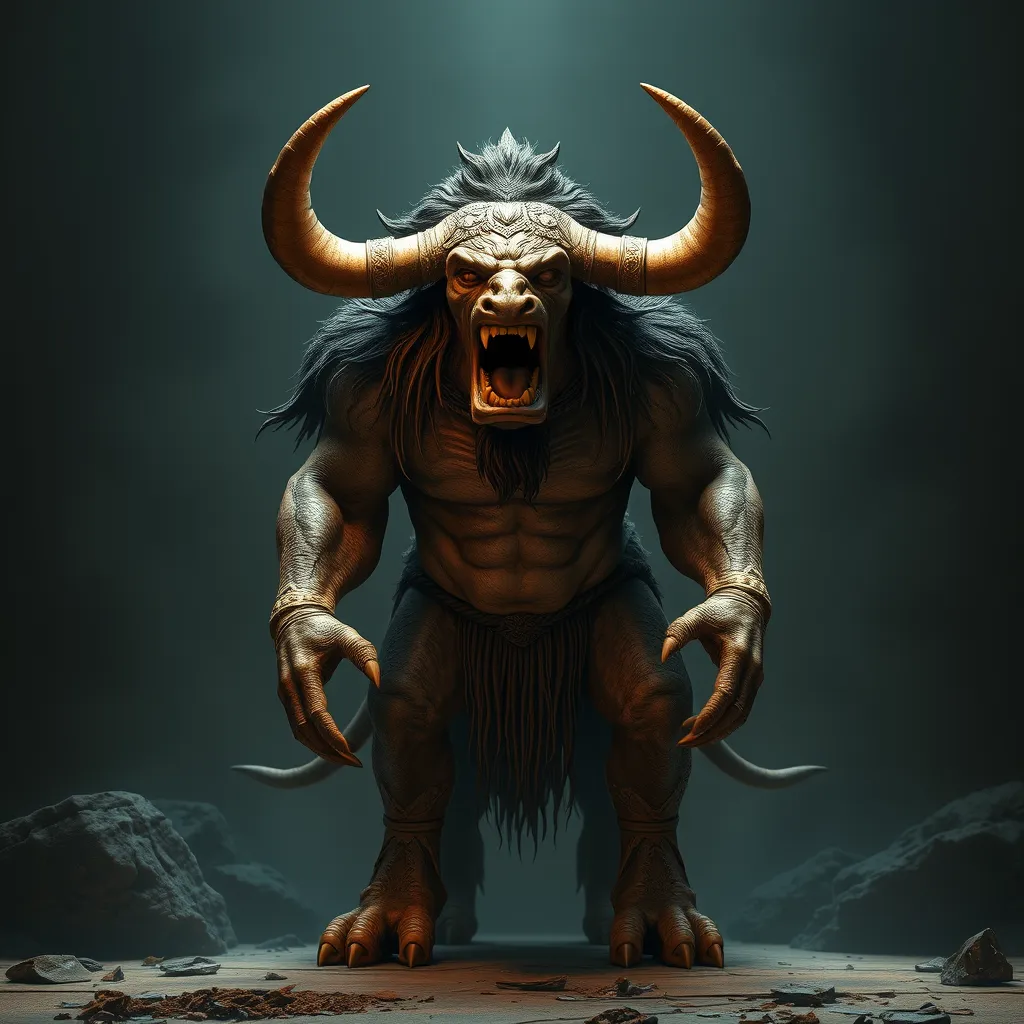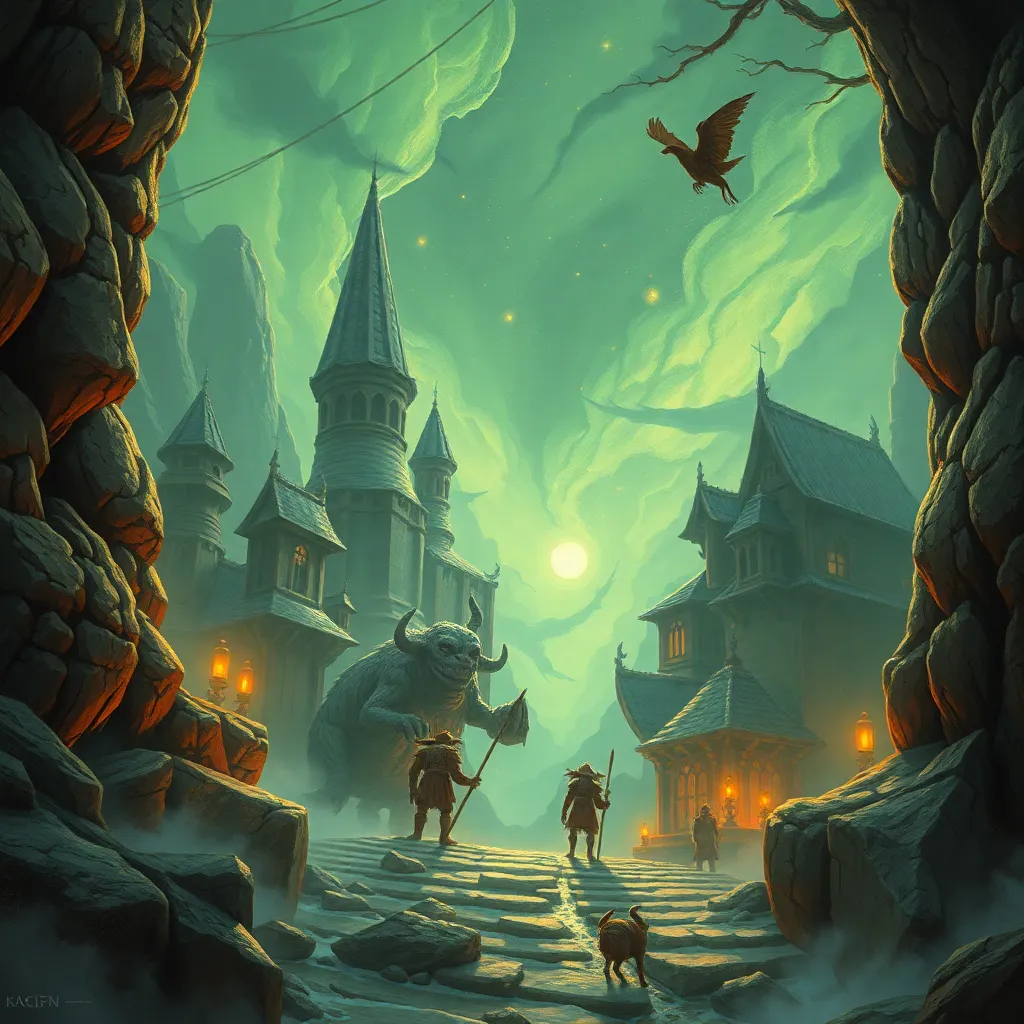Mythological Beast: The Minotaur’s Place in the Pantheon of Ancient Greek Monsters
I. Introduction
Mythological beasts have long held a significant place in ancient Greek culture, serving as embodiments of human fears, societal issues, and the mysteries of nature. These creatures often bridged the gap between the divine and the mortal, acting as metaphors for the complexities of human existence. Among these legendary figures, the Minotaur stands out as one of the most intriguing and enduring monsters in Greek mythology.
The Minotaur, a creature with the body of a man and the head of a bull, is emblematic of the struggles between humanity and the primal forces of nature. Its origins are steeped in a rich tapestry of myths that intertwine themes of power, desire, and tragedy. This article aims to explore the Minotaur’s role among Greek monsters, delving into its birth, myths, legacy, and cultural interpretations.
II. The Birth of the Minotaur
The story of the Minotaur begins with Pasiphaë, the wife of King Minos of Crete. According to myth, Minos angered the sea god Poseidon, who sought revenge by making Pasiphaë fall in love with a magnificent Cretan Bull. Pasiphaë’s unnatural desire led her to create a lifelike wooden cow, allowing her to mate with the bull. The result of this union was the Minotaur, a creature that embodied the duality of human and beast.
King Minos, faced with the horror of his wife’s monstrous offspring, sought to contain the Minotaur. He commissioned the architect Daedalus to construct the Labyrinth, a complex maze designed to imprison the beast. The Minotaur’s birth symbolizes the consequences of unchecked desire and the intersection of human nature with the wild, untamed aspects of existence.
III. The Minotaur in Greek Mythology
The Minotaur features prominently in several key myths that highlight its significance in Greek mythology. One of the most notable stories involves the sacrifices made to the beast. As part of a pact with Minos, the city of Athens was required to send seven young men and seven young women every nine years to be fed to the Minotaur, representing the brutal demands of power and the cost of human life.
- The Labyrinth: A symbol of confusion and entrapment, the Labyrinth reflects the complexities of the human psyche and societal structures.
- The sacrifices: The tragic fate of the Athenian youths underscores themes of fate, sacrifice, and the consequences of political decisions.
The Minotaur also serves as a metaphor for human fears and societal issues. It encapsulates the struggle between civilization and savagery, the known and the unknown, and the balance between reason and chaos.
IV. The Minotaur’s Encounter with Theseus
The tale of the Minotaur reaches its climax with the hero Theseus, who emerges as a symbol of bravery and ingenuity. Motivated by love for the Athenian princess Ariadne, Theseus volunteers to enter the Labyrinth and confront the beast. Armed with a ball of thread provided by Ariadne, he navigates the maze, ultimately leading to a fateful encounter.
In the heart of the Labyrinth, Theseus battles the Minotaur, ultimately defeating it and freeing the youths trapped by Minos. This victory is significant in Greek mythology, representing the triumph of human reason and courage over primal fear and chaos. It also marks a turning point in the power dynamics between Athens and Crete, symbolizing the potential of humanity to overcome its darker instincts.
V. The Minotaur’s Legacy in Art and Literature
The Minotaur’s image has been immortalized in various forms of art and literature throughout history. In ancient pottery and sculpture, the creature was often depicted in dynamic poses, emphasizing its ferocity and duality.
- Pottery: Vases and amphorae frequently illustrated scenes from the Minotaur myth, highlighting its significance in cultural narratives.
- Sculpture: Statues of the Minotaur reflect the artistry of the time, capturing the creature’s terrifying yet fascinating nature.
In later literature, the Minotaur has been reinterpreted in various ways, from being a symbol of human struggle to serving as a cautionary figure in moral tales. Modern adaptations, including films, novels, and plays, continue to explore the themes of the Minotaur, demonstrating its enduring relevance and adaptability in contemporary culture.
VI. The Minotaur Compared to Other Greek Monsters
The Minotaur shares similarities and differences with other notable Greek monsters, such as the Cyclops and Cerberus. While all these creatures serve as obstacles to heroes and representations of chaos, the Minotaur’s unique human-animal hybrid nature sets it apart.
- Cyclops: This one-eyed giant embodies brute strength and simplicity, while the Minotaur symbolizes the conflict between reason and instinct.
- Cerberus: The three-headed dog guards the underworld, representing the fear of death, whereas the Minotaur is a product of human folly and desire.
Each of these monsters plays a thematic role in mythology, reflecting various aspects of the human condition and the challenges faced by individuals in their quest for meaning and order.
VII. Cultural Interpretations of the Minotaur
The Minotaur has been subject to various cultural interpretations over the years. Psychologically, it can be seen as a representation of the human psyche, embodying the darker aspects of our nature that we often seek to suppress. The struggle between Theseus and the Minotaur can be viewed as a metaphor for confronting one’s inner demons.
- Feminist readings: Some interpretations explore the Minotaur’s relationship with Pasiphaë, examining themes of desire, power, and the consequences of patriarchal structures.
- Post-colonial interpretations: The Minotaur may also symbolize the complexities of identity and the repercussions of cultural domination.
Moreover, the Minotaur serves as a cautionary tale about hubris and the consequences of power, reminding us of the dangers inherent in unchecked ambition and desire.
VIII. Conclusion
The Minotaur holds a significant place in Greek mythology, serving as a powerful symbol of the intersection between humanity and the primal forces of nature. Its myths explore themes of sacrifice, power, and the struggle between chaos and civilization. The enduring legacy of the Minotaur in art and literature reflects its profound impact on storytelling through the ages.
As we reflect on the relevance of mythological beasts like the Minotaur, we gain insights into human nature and societal challenges. These ancient stories continue to resonate, reminding us of our fears, desires, and the complexities of existence that have remained unchanged throughout history.



